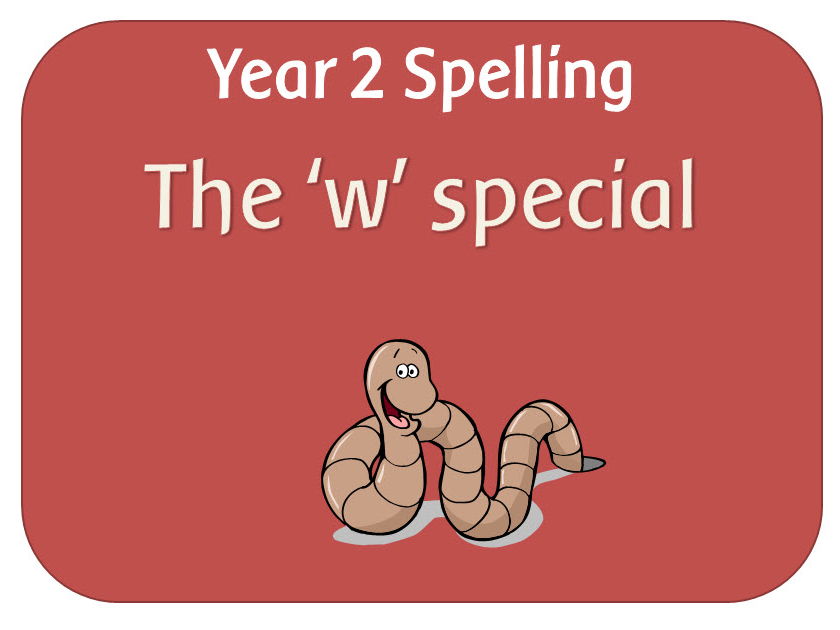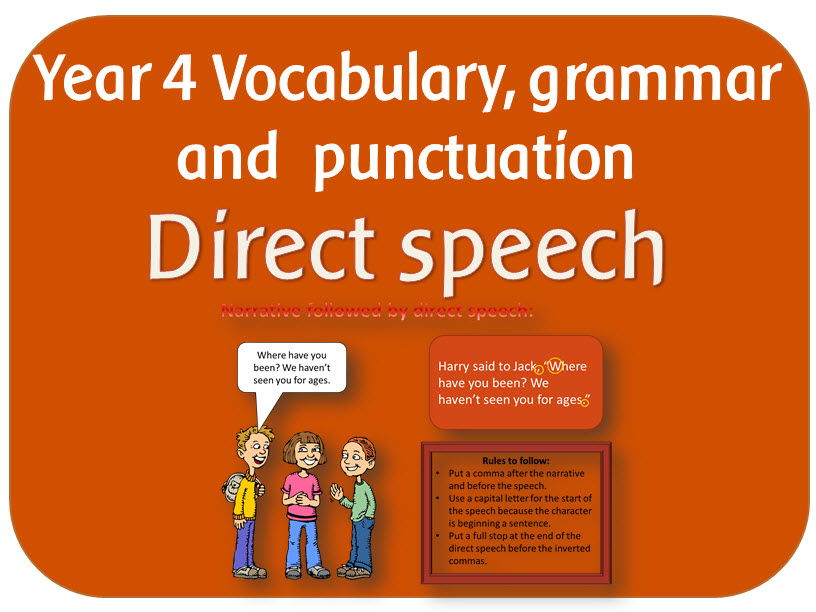
404Uploads
1045k+Views
672k+Downloads
English language arts

SPaG Year 2 Spelling: The /ɒ/ sound spelt a, or and ar after w (and qu)
A set of resources looking at the spelling guidelines for:
The /ɒ/ sound spelt a after w and qu
The /ɜ:/ sound spelt or after w
The /ɔ:/ sound spelt ar after w
There is a powerpoint for each sound, a bingo game containing all the spellings, plus a word list and outline plan.

Spag Punctuation posters: KS1 KS2 Years 1 to 6 display pack
A set of 22 A4 posters describing, naming and explaining different types of punctuation
The posters cover all the punctuation outlined in the English National Curriculum.
The titles of the posters are:
Punctuation
Capital letters
Spaces
Sentence
Full stop
Question mark
Exclamation mark
Apostrophes for contractions
Apostrophes for ownership
Comma
Commas for lists
Inverted commas
Ellipsis
Hyphen
Colons to introduce a list
Colons for independent clauses
Semi-colon
Bullet points
Dash
Brackets
Plus 2 'DO NOT...' posters:
Do not use an apostrophe for 'its' when it is a possessive adjective
Do not use an apostrophe for plurals
Each poster contains the title and explanation and an image / examples
Plus a 'Punctuation' banner that prints onto 3 A4 pages and a border to frame a display.

SPaG Year 1 Spelling pack: Words ending ve
A set of resources to teach the guideline/rule in the Spelling Appendix:
English words hardly ever end with the letter v, so if a word ends with a /v/ sound, the letter e usually needs to be added after the ‘v’
POWERPOINT RESOURCES:
Words ending -ve: explains the spelling rule and gives examples of words for a class activity where the children can try to spell the words.
PDF:
Wordsearch: words ending ve
Worksheet: Jumbled up words to rearrange.
WORD:
-ve word list
Outline adaptable plan

SPaG Year 3 & 4 Spelling: The /ʌ/ sound spelt ou
Resources to teach the spelling guidelines for the /ʌ/ sound spelt ou
POWERPOINTS
U spelt ou: Talks about how the /u/ sound can be spelt ou, and gives examples of words containing the grapheme. It ends with a spelling activity.
PDF (PRINTABLE) RESOURCES
Look Write Cover Check: For spelling practice
u spelt ou word cards
TEACHER RESOURCES
Word list
Adaptable outline plan

SPaG Year 3 Grammar: Paragraphs, headings, sub-headings and present perfect form of verbs
POWERPOINTS:
Paragraphs:An introduction to paragraphs, explaining what they are and how to write them.
Headings and sub-headings:An introduction to headings and sub-headings, explaining what they are and where and how they can be used.
Present perfect:Explains what the present perfect tense is and how it is formed. It ends with sentences for the children to rewrite using the present perfect tense.
PDF activity: Present perfect worksheet

SPaG Year 5 Terminology powerpoint
Explains the terminology specified in Y5: modal verb, relative pronoun, relative clause, parenthesis, cohesion and ambiguity.

SPaG Year 1: The prefix un
2 powerpoint lessons - how the prefix un- changes the meaning of verbs and adjectives; plus jigsaw cards and a lesson plan.
Adding the prefix un to adjectives: Powerpoint explaining how the meaning of adjectives change when un- is added, ending with an activity
Adding the prefix un to verbs: Powerpoint explaining how the meaning of verbs changewhen un- is added, ending with an activity
Activity cards
Jigsaw cards - root words and the prefix un.

SPaG Year 2 Spelling: The /r/ sound spelt wr
A set of resources looking at words beginning with wr.
POWERPOINT: Explains the spelling and gives examples for the children to read. Then there is a spelling activity, using a look, hide and check format
BINGO: Wr words
CARDS: Matching cards with words and pictures
CROSSWORD: wr words
PRACTICE SHEET: Writing words beginning with wr spelling sheet
WORDSEARCH: wr words
WORD DOCUMENTS: Lists of words and a planning document.

SPaG Year 2 Spelling: The /ɔ:/ sound spelt a before l and ll
A set of resources to teach children that the /ɔ:/ sound (‘or’) is usually spelt as a before l and ll.

SPaG Year 2 Text: Present and past tense and the progressive form of verbs
Four powerpoints looking at past and present verb tenses.
POWERPOINTS
Introduction to tenses: Explains what tense means, and past and present tense, giving examples including the progressive form of verbs.It ends with some examples and opportunities for children to change the tenses of sentences.
Changing present into past tense: Sentences to change
Thinking of verbs and past and present tense: Look at pictures and describe the actions in the present and the past tenses.
Irregular past tense verbs: Explanation and lists of irregular past tense verbs.

SPaG Year 3 & 4 Spelling: Possessive apostrophe with plural words
POWERPOINT:Explains what they are and how to use them then finishes with an activity to reword sentences and put the apostrophe in the correct place.
PDF (PRINTABLE) RESOURCES:
Possessive apostrophes plurals worksheet
PLURAL POSSESSIVE APOSTROPHES POSTERS
A set of posters for display
TEACHER RESOURCES:
Adaptable outline plan

SPaG Year 2 Spelling: Possessive apostrophes activities and display
POWERPOINT
Apostrophes for possession: Explains how to use them, and gives sentences to reword, using apostrophes for possession.
ACTIVITY
Worksheet - Possessive apostrophes
DISPLAY
Single possessive apostrophes posters
TEACHER RESOURCES
Y2 Spelling Appendix - Possesive apostrophes: An adaptable outline plan

KS1 HOMOPHONE posters / flashcards
A set of A4 posters containing all the homophones identified in the Y2 spelling appendix plus other common homophones that children will encounter in KS1.
Each page is split into 2 so that 2 homophones are printed on one page. You can cut them in half and use as flashcards or leave them whole and display them. There are 25 pages, plus 3 pages containing just one word.
The homophones are:
bare bear
be bee
blue blue
here hear
there their they’re
night knight
one won
quiet quite
see sea
sun son
to too two
PLUS
been bean
four for
new knew
no know
pair pear
red read
right write
wear where
sew so saw
tail tale
through threw
week weak
which witch

KS1 Fantasy stories - story maker settings, characters and objects
An introduction to fantasy stories - one powerpoint looks at the difference between fact and fiction; the second powerpoint guides the children through making up their own fantasy stories.
The printable files are cards - each set has 12 images so the children can use them to choose a setting, main character and an object.

SPaG Year 2 Spelling: The /i:/ sound spelt –ey
A powerpoint lesson looking at words such as key, monkey, donkey etc. The pack also includes a word list, wordsearch, crossword and outline planning.

SPaG Year 4 Word Grammar: The grammatical difference between plural and possessive -s
3 Powerpoints:
Recap of plural s: Revision of previous learning about nouns, singular and plural with a short exercise at the end.
Recap of possessive s: Revision of previous learning about possessive -s.
Plural or possessive s: Sentences with lots of questions for the children to answer, whether the words contain plural or possessive -s.
1 Worksheet:
Plural and possessive s

SPaG Year 1 Spelling pack: Division of words into syllables
A set of resources to teach the guideline/rule in the Spelling Appendix:
Each syllable is like a ‘beat’ in the spoken word. Words of more than one syllable often have an unstressed syllable in which the vowel
POWERPOINT RESOURCES:
Introduction to syllables: An explanation of what syllables are and how to identify them in words. It gives several examples of words with more than one syllable with opportunities for children to spell them.
Syllable practice: Activity where the children can read a word, then write it by identifying how many syllables it contains, then check it.
WORKSHEETS:
Two syllable word worksheet: A grid for splitting up words into syllables as an aid to spelling.
Blank syllable word worksheet: As above, but the grid is left blank to insert words.
sound is unclear

SPaG Year 2 Spelling: Words ending -tion
Resources to teach the spelling rules for words ending in tion
POWERPOINT
Words ending tion: Introduction to the 'shun' sound spelt tion as the most common spelling, with a spelling activity.
ACTIVITIES
Word wheel: making words ending in tion
Word search: Words ending in tion
Although every effort has been made to check wordsearches for unintentional inappropriate words, it is recommended that teachers double check them before giving to children.
TEACHER RESOURCES
Y2 Spelling Appendix Words ending in tion: An adaptable outline plan
Word List - With relevant words

SPaG Year 4 Punctuation: Inverted commas and other punctuation for direct speech
The powerpoint looks at the different forms of punctuation to use when writing direct speech. Shows different ways of recording direct speech, eg, direct speech first then the narrative/ narrative first then the direct speech etc. It ends with images and speech bubbles for the children to record direct speech using the correct formats.
The display posters give prompts to help the children remember how to write direct speech.

SPaG Year 1 Spelling pack: The /tʃ/ sound spelt tch straight after a single vowel letter.
POWERPOINT RESOURCES:
Words ending tch: explains the spelling rule and gives examples of words for a class activity where the children can try to spell the words.
PDF:
Wordsearch: words containing tch
Worksheet: Jumbled up words to rearrange.
WORD:
Tch word list
Outline adaptable plan




















